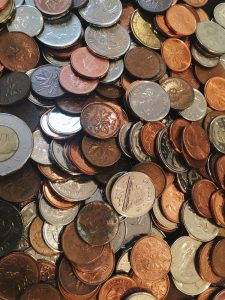The foreign exchange (forex) market is the largest financial market in the world, with an average daily turnover of over $5 trillion. Trading forex involves buying and selling currency pairs, with the aim of making a profit from the fluctuations in exchange rates. To be successful in forex trading, it is essential to understand how to read charts. In this article, we will explain the basics of forex charts and how to interpret them.
What are forex charts?
Forex charts are graphical representations of the price movements of currency pairs over time. They are the primary tools used by traders to analyze market trends and make trading decisions. Forex charts are available in different types, including line charts, bar charts, candlestick charts, and point-and-figure charts.
Line charts
Line charts are the simplest type of forex chart. They represent the closing prices of a currency pair over a specified period. A line chart consists of a single line that connects the closing prices of each period. Line charts are useful for identifying the general trend of a currency pair, but they do not provide much detail about price movements within each period.
Bar charts
Bar charts provide more detailed information than line charts. They show the opening, closing, high, and low prices of a currency pair for each period. Each bar represents a specific period, such as one day or one hour. The top of each bar represents the highest price traded during the period, while the bottom of the bar represents the lowest price. The left side of the bar represents the opening price, and the right side represents the closing price.
Candlestick charts
Candlestick charts are similar to bar charts in that they show the opening, closing, high, and low prices of a currency pair for each period. However, candlestick charts use a different visual representation. Each period is represented by a candlestick, which consists of a body and two wicks. The body of the candlestick represents the opening and closing prices, while the wicks represent the high and low prices. A bullish candlestick has a long body and a short wick, indicating that the price closed higher than it opened. A bearish candlestick has a long wick and a short body, indicating that the price closed lower than it opened.
Point-and-figure charts
Point-and-figure charts are less common than line charts, bar charts, and candlestick charts. They are used to filter out small price fluctuations and focus on significant price movements. Point-and-figure charts use X’s and O’s to represent price changes. An X is used to represent a rising price, while an O is used to represent a falling price.
How to interpret forex charts
To interpret forex charts, traders must understand the information provided by each type of chart. The most important information provided by forex charts is the trend of the currency pair. Traders use trend lines to identify the direction of the trend. An uptrend is identified by a series of higher highs and higher lows, while a downtrend is identified by a series of lower highs and lower lows. A sideways trend is identified by a series of highs and lows that are around the same level.
Traders also use support and resistance levels to identify potential entry and exit points. A support level is a price level at which buyers are expected to enter the market, while a resistance level is a price level at which sellers are expected to enter the market. When a currency pair reaches a support level, traders may buy the pair, expecting the price to rise. When a currency pair reaches a resistance level, traders may sell the pair, expecting the price to fall.
Conclusion
Forex charts are essential tools for traders who want to analyze market trends and make trading decisions. There are several types of forex charts, including line charts, bar charts, candlestick charts, and point-and-figure charts. Traders use trend lines, support and resistance levels, and other technical indicators to interpret forex charts and make trading decisions. By understanding how to read forex charts, traders can increase their chances of making profitable trades in the forex market.





